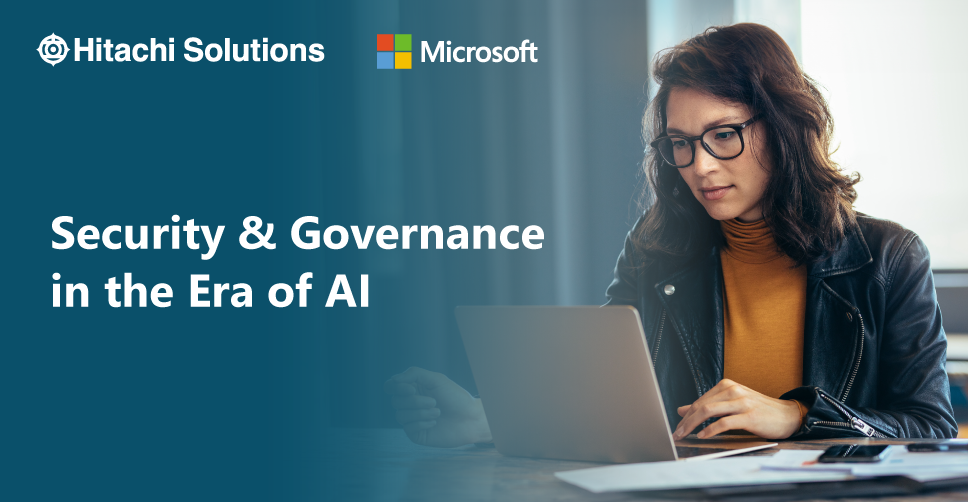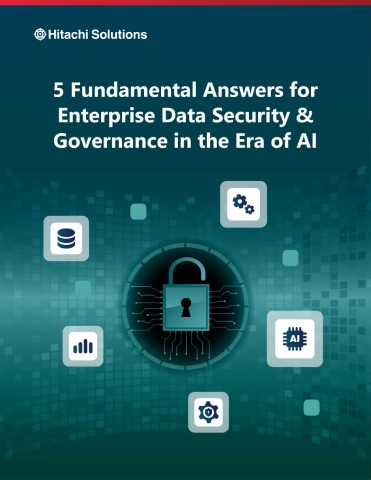

The pace of data growth is increasing exponentially. New data sources are being created and connected every day, and that data needs to be captured, rationalized, and secured. In addition, the new technologies such as internet of things (IoT) and artificial intelligence (AI) bring great promise for intelligent insight as well as a fresh set of unique risks.
As Vasu Jakkal, Microsoft CVP, Security, Compliance, Identity, and Management, said, “End-to-end security has never been more important. Anything less is like locking your doors and leaving your windows open.”
Our new eBook provides the essential knowledge needed to navigate the complexities of data and security in the era of AI. With this information, you’ll be able to make better informed decisions and start on a path to protect your organization’s valuable assets while exploring the massive potential AI offers your people and processes.

Download the complete eBook, 5 Fundamental Answers for Enterprise Data Security & Governance in the Era of AI, for a more in-depth look at how AI, and specifically generative AI, are creating both promise and security risk for organization leaders.
The eBook is designed to provide you with a foundation in 5 areas:
- A base understanding of the AI evolution, both general AI and generative AI. General AI has been around for awhile (think Siri and Google Assistant). Generative AI joined the landscape in late 2022 and was the first public introduction to direct interaction with large language models (LLMs). Thanks to a free web browser interface, the general population can now chat with an LLM, marking a seismic shift in the relationship between humans and AI. But like any new technology, generative AI is subject to novel threats, and organizations need to be highly attuned to the business and security risks they may be incurring.
- A primer on how threats are evolving. A major concern around the use of generative AI tools (particularly those accessible to the public like ChatGTP) is their potential for spreading misinformation and harmful content. Bad actors and hackers could use AI and generative AI tools to intensify and scale up the types of harmful acts we are already protecting against, and it’s important to understand how they are doing so.
- The importance of security systems that provide non-negotiable, end-to-end security. Protection from generative AI threats come built-in with the Microsoft Azure security platform, which spans identity security, compliance, device management, and now generative AI. Hitachi Solutions’ security offerings are built on the Microsoft security platform and based on Zero Trust architecture— an approach that moves the security perimeter to every network, system, user, and device within and outside the organization.
- The need to capture, rationalize, and secure data through effective data governance. A data governance framework should outline roles, responsibilities, and decision-making processes related to AI security and compliance, and assign accountability for AI security to specific individuals or teams within the organization.
- And lastly, direction on how executives can cultivate a security-first mindset throughout their organizations regarding the use of generative AI for both personal and professional tasks. Employees will, and are, using free AI tools whether we like it or not. So, it’s important to set guidelines and communicate with employees outlining expectations and consequences for abuse. As with all security training, make sure communication is ongoing and provide guidance on where employees can report concerns or ask questions.
What You Can Do Now
Our advisory team of experts will build your confidence in your ability to safely adopt AI tools focused on tangible business outcomes. With a clear understanding of business impact, ROI, and cost benefit insights, you’ll be able to see through the headlines and get to what matters for your enterprise.
Digital transformation, or AI transformation as some are now calling it, is more critical than ever. Not only are new generative AI innovations leveraged and scaled from the cloud, but the security in modern data platforms is more stringent, but also more pliable for different enterprise audiences and usages.
As we all consider what we can do with AI now and in the future, we can’t overstate the importance of end-to-end security in a digitally modernized system. This is exactly where to start: modernize both your data and security infrastructures to strengthen your current security posture, so that when you’re ready to deploy AI, you won’t be vulnerable to attacks. AI solutions can only be as strong as their underlying security.


